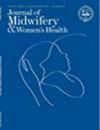无胎儿细胞 DNA 的临床应用:科学现状。
IF 2.1
4区 医学
Q2 NURSING
引用次数: 0
摘要
随着技术的进步,孕妇产前基因检测的选择范围也在不断扩大。领先的医学组织推荐无细胞 DNA 是筛查 13、18 和 21 三体以及胎儿性染色体非整倍体最灵敏的检测方法。商业化的检测方案超出了这些推荐的检测范围,产前保健专业人员应熟悉病人可能选择的检测方法,尽管这些方法超出了目前医学推荐的范围。本文介绍了无细胞 DNA 技术的最新进展以及产前护理专业人员的临床注意事项,并指出这是一个日新月异的科学和医疗保健领域。本文章由计算机程序翻译,如有差异,请以英文原文为准。
Clinical Applications of Fetal Cell-Free DNA: State of the Science
Advances in technology have correlated with expanding prenatal genetic testing options for pregnant people. Leading medical organizations recommend cell-free DNA as the most sensitive screening test for trisomies 13, 18, and 21, as well as for fetal sex chromosome aneuploidies. The commercially available testing options go beyond these recommended tests, and prenatal care professionals should be familiar with the tests that their patients may choose despite being beyond the scope of current medical recommendations. This article explains updates in cell-free DNA technology and clinical considerations for prenatal care professionals, recognizing that this is a rapidly changing field of science and health care.
求助全文
通过发布文献求助,成功后即可免费获取论文全文。
去求助
来源期刊
CiteScore
3.60
自引率
7.40%
发文量
103
审稿时长
6-12 weeks
期刊介绍:
The Journal of Midwifery & Women''s Health (JMWH) is a bimonthly, peer-reviewed journal dedicated to the publication of original research and review articles that focus on midwifery and women''s health. JMWH provides a forum for interdisciplinary exchange across a broad range of women''s health issues. Manuscripts that address midwifery, women''s health, education, evidence-based practice, public health, policy, and research are welcomed

 求助内容:
求助内容: 应助结果提醒方式:
应助结果提醒方式:


